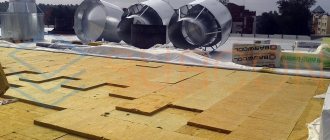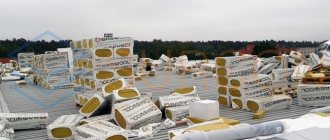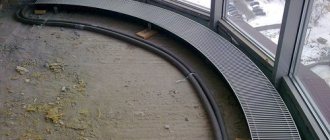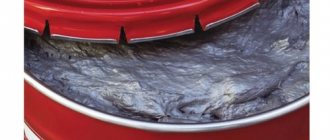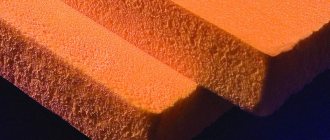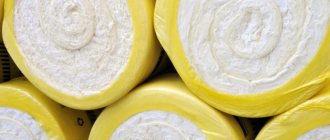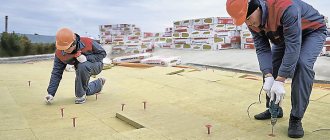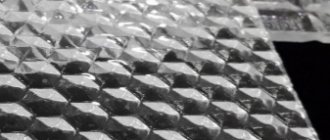Description of expanded clay and its types
To produce expanded clay, clay is used, which is fired at high temperatures. After this, the outside surface is melted , as a result of which the material receives a specific color and smooth texture.
The formation of pores is possible due to the gas that is released during the annealing process. Clay, or rather its various varieties, is represented in many building materials, including cement and brick. The basic natural properties of clay explain the increased strength. Despite the characteristic porous structure of expanded clay, which has a beneficial effect on the thermal insulation characteristics, the compression resistance is sufficient to use the material in the manufacture of concrete and expanded clay blocks.
There are several types of expanded clay, which differ in their shape, production method and appearance.
- Expanded clay gravel. These are oval granules of a reddish-brown hue. Such expanded clay is widely used in construction.
- Expanded clay crushed stone. Such relatively large fragments can be obtained through splitting. Features of the material are its angular shape and the presence of sharp edges. Most often, crushed stone is added to the mixture used in the concrete manufacturing process.
- Expanded clay sand. Such small particles are a by-product formed during the crushing or firing of expanded clay. Sand is used as a porous filler.
The sizes of gravel and crushed stone range from 5–40 mm, and expanded clay sand particles are about 5 mm. The smallest fractions are used to filter water. They are also used to make sprinkles for aquariums. This method of application indicates the high environmental friendliness of the material.
Although the type of expanded clay cannot be called presentable, this is completely unimportant, since it is not used in open form. Most often it is added when constructing an insulated floor and is used as one of the ingredients in the concrete production process.
Production and use of expanded clay
Initially, expanded clay was obtained by firing a mixture of clay with dust or sawdust. In the oven they formed flat cakes, which were broken after firing. Such expanded clay was sold in bags in the 19th century.
Modern production of expanded clay begins with crushing the rock with rollers. They are also suitable for the production of shungizite, which many people confuse with the hero of the article. However, shungizite is made from shale chips, not clay.
The material turns out to be more resistant to aggressive environments and less moisture-intensive. However, in terms of thermal conductivity, shungizite is inferior to expanded clay and differs from it in appearance. Quartz granules are darker.
The clay crushed on rollers is sent to the kiln drum. Its diameter reaches 5 meters. The installation can be as long as 70. The high temperature inside the drum is maintained by a nozzle. The heat dries out the clay.
If you need a material that is as warm as possible and almost does not absorb water, the rock is melted. The dense crust protects the granules from water. At the same time, cavities with air are formed inside the expanded clay. The process is boosted by additives such as iron oxide sent into the drum.
The drum for drying expanded clay is located at an angle to the ground. The formed granules are poured into a receiving container under the influence of gravity. Next, the products are packaged in polypropylene bags or sold in bulk.
Decorative expanded clay
They hone the nuances of producing the hero of the article and come up with new approaches at the Keramzit Research Institute. This is the only research institute in Russia that specifically studies clay granules and experiments with them.
The research institute is located in Samara. Rare black clay is also mined there. The rock is extracted from a 7-meter depth. Expanded clay turns out dark, like shungizite, and has similar properties to it. Black clay is less porous and more durable than red and white varieties.
When using expanded clay, its strength is important. They do a screening test. The granules are poured onto the asphalt and pressed with your foot. If the “beads” have crumbled, and the price of expanded clay per 1 m3 is high, the requests are unreasonable.
Expanded clay is produced in various fractions
It is worth paying extra for pellets that remain intact. However, in some areas the strength of the hero of the article is secondary. In a floor screed, for example, the granules will strengthen the concrete, and the dry backfill will cover and protect the final coating. The main thing here is the heat capacity of expanded clay.
Within the walls of the laboratories you can also check the radioactivity of the hero of the article. This is what they did, for example, in Chuvashia. The expanded clay concrete produced here was given to the Center for Hygiene and Epidemiology.
It was tested using a method certified at the Mendeleev Research Institute. The radioactivity of the blocks is several times lower than the permissible norm for building materials. Since radioactive nuclides are contained in the earth's crust, they also end up in human-made products.
Expanded clay is used in landscape design
It is important that the radiation from it is not overly active. As for expanded clay, the background of some samples is completely absent. So, the material can be easily used by people with a phobia of radioactivity and all those who want to protect themselves and their family as much as possible.
There are no phenol, formaldehydes and other non-radioactive, but harmful and volatile components in clay granules either. However, this is a controversial issue. When working with low-quality clay, its properties are improved with the help of synthetic additives. Again, they can only be identified by an examination at the Standardization Center and Rospotrebnadzor.
Use in construction
In addition to using expanded clay as insulation in the form of bulk material, it is used in the manufacture of various construction products:
- For the production of lightweight concrete, the use of ceramic gravel instead of granite significantly reduces thermal conductivity. Of course, this reduces its strength, but it remains sufficient for the construction of low-rise buildings.
- Reinforced concrete slabs with expanded clay filler are important in the construction of multi-story buildings. The design of the building usually does not provide for the load on the external walls, but the thermal conductivity coefficient plays an important role.
- Lightweight hollow expanded clay blocks and bricks have always been popular among the population. Low price, lightweight, easy to install, they are simply ideal for individual construction. The main thing is to comply with the requirement - to insulate well from moisture.
Application of material in agriculture
Farmers successfully use it in the process of growing vegetables. Excellent drainage, it removes excess water from the root system of plants, preventing the development of rot and fungi. The grains optimize the air exchange of plants, especially those planted in dense clay soils. Granules can be added when arranging beds; a layer 2-3 cm thick will be enough for effective drainage. Moreover, this can also be done in a home garden.
At home, grains are also used in growing potted flowers. They look much better with this drainage. Another promising area for using ceramics is hydroponics. Granular material successfully replaces soil for plants. Its porous varieties first absorb the nutrient substrate, and then gradually release it to the roots. A unique dosing of nutrition occurs, which has a beneficial effect on the development of plants.
We looked at how expanded clay is produced. Due to its good performance characteristics and relative low cost, its scope of application is very wide. But it would be a mistake to think about the complete universality of the material. There are several varieties of it, optimally suited for different purposes. This must be taken into account when choosing granules.
Composition of expanded clay
The main material from which construction expanded clay is made is sedimentary clay rocks . The composition of clayey rocks is quite diverse and includes not only ordinary clay, but various impurities: quartz up to 30%, organic compounds, feldspar, carbonates and a small amount of compounds of various kinds of metals. The composition of expanded clay depends on the characteristics of a particular area where the extraction of raw materials for production was carried out.
In addition to the components originally contained in the raw material, to achieve the swelling effect, artificial impurities and organic compounds (solar and oil) can be added to the composition at the production stage.
Main characteristics
First of all, it is worth noting that the parameters of this material were specified in GOST 9757–90, which concerns the quality of any porous materials used in construction. At the same time, a number of indicators that are not regulated remain no less important.
- Factional composition. There are 3 fractions: 5–10 mm and 10–20 mm, as well as 20–40 mm. A separate category includes fractions that are almost never used in construction. We are talking about granules or crushed stone with sizes of 2.5–10 mm and 5–20 mm. The material used as a heat-insulating layer can have any fraction. This is explained by the need for high-quality filling of all voids.
- Grades by bulk density. There are 7 brands in total. However, varieties 700 and 800 are produced only to order. It is necessary to take into account the fact that the actual volumetric weight exceeds the bulk density by approximately 1.5 times. Accordingly, we are talking about density without taking into account the distance between particles and individual granules.
- Strength grades. For expanded clay gravel and crushed stone, there are 13 and 11 grades, respectively. It is important to remember that the same brand of both types of expanded clay indicates different strengths. It is worth considering the fact that as the density increases, the strength will also increase. This relationship is regulated by the above-mentioned GOST, due to which the production of low-quality expanded density expanded clay is excluded.
- Compaction factor. This value should not exceed 1.15. It is taken into account when compacting the mass during transportation.
- Thermal conductivity. This is the most important parameter indicating the thermal insulation characteristics of expanded clay. On average, this coefficient is 0.1–0.18. You can immediately notice that the range is quite narrow, and this confirms the excellent thermal insulation characteristics of any type of expanded clay. The higher the density, the higher the thermal conductivity coefficient. This feature is explained by a decrease in the size and number of pores containing air.
- Water absorption. This is an equally important parameter. Expanded clay is usually classified as a stable material, since this parameter ranges from 8 to 20%.
- Soundproofing. Expanded clay, like other materials distinguished by their thermal conductivity, has good sound insulation characteristics. The best result can be achieved when constructing a wood floor, where expanded clay acts as a layer between the surface and the interfloor slab itself.
- Frost resistance. The presence of clay and low water absorption provide increased frost resistance.
Advantages of expanded clay
— Thermal insulation and sound insulation. Expanded clay has a low thermal conductivity coefficient, and in this indicator it is quite comparable to wood. Thanks to this feature, a layer of expanded clay reliably protects the walls, floors and roof of the house from winter cold. Moreover, in addition to preserving heat, expanded clay is famous for its soundproofing properties, perfectly protecting the home from extraneous noise. At the same time, this insulation does not attract insects and rodents, which cannot be said about the same foam.
- Cheap. The main advantage of expanded clay is its low cost. There is no other insulation that, while maintaining its properties, would be so cheap. This is especially true when insulating utility rooms, basements and roofs of houses, i.e. places where the owners do not want to spend a lot of money on insulation. This explains the indispensability of expanded clay in industrial construction.
- Fire resistance. Expanded clay does not burn or smolder, and this is one of the key factors when choosing insulation for a home. Unlike mineral wool, polystyrene foam and other heat-insulating materials, which are not only prone to burning, but also emit harmful substances into the atmosphere, expanded clay is able to protect the home from the penetration of fire.
- Frost resistance. This insulation is resistant to temperature changes and does not change its properties, regardless of whether it is hot outside or severely frosty. This feature is used by builders who insulate basements located underground with expanded clay, as well as unheated rooms located above basements.
- Environmentally friendly. Expanded clay is an environmentally friendly material that does not emit harmful substances into the atmosphere and does not affect human health in any way. And this is a huge advantage over insulation made from synthetic fiber.
- Low weight. Due to the lightness of this insulation, it does not create additional load on the structure, and there is no need to create a special frame to backfill it.
- Durability. Considering that the material for making expanded clay is clay, there is no doubt that this material will “outlive” the structure in which it serves, for example, as floor insulation.
— Easy to install. Expanded clay, without exaggeration, is the simplest known construction insulation material, and therefore anyone can handle it, even without construction skills.
Disadvantages of expanded clay
- Fragility. It should be noted that expanded clay is a fragile material. Having damaged the shell, the expanded clay ball immediately loses its thermal insulation properties, which means it is only suitable as an additive to the concrete mixture.
— Large layer of thermal insulation. To ensure normal thermal insulation, a large layer of expanded clay should be poured. In this regard, this material is not suitable for rooms with low ceilings.
— Low moisture resistance. The porous surface of expanded clay balls easily absorbs moisture, which means that if installation rules are violated, this material can draw moisture from the environment, causing the spread of mold and mildew.
Types of ceramic material
The main feature by which classification is carried out is the size of the grains. Based on this, three groups are distinguished:
Expanded clay sand
The size of the granules does not exceed 5 mm. It is made by grinding large fragments of ceramic mass or by firing the remains of clay raw materials. The fine fraction is good as a filler in the production of cement mortars, ultra-light concrete, etc.
Expanded clay gravel
It consists of grains of only round shape, ranging in size from 5 to 40 mm. They are produced by swelling clay blanks in ovens. They have the highest insulating characteristics. It is used as insulation for various purposes and in the production of concrete blocks.
Expanded clay crushed stone
These are the largest elements, ranging in size from 5 to 40 mm. Moreover, the difference in size can be significant. Any shape can be found, but most often these are angular details. It is made by grinding pieces of ceramic mass. It is most often used as a filler in the process of producing lightweight concrete.
Floor insulation in a frame house on stilts
A pile foundation is a reliable basis for a future frame house, but when insulating the floor, you need to take into account certain rules to avoid drafts under the floor and dampness.
The technology of arranging a foundation on piles is used mainly in swampy areas, where special attention is required to the materials used to obtain strength and resistance to movements of the soil layer. Therefore, thermal insulation is created together with the subfloor, since the layered structure protects the housing from moisture penetration from the foundation.
With a pile foundation, the floor of the first floor is especially not protected from cold and wind. There remains free space between the ground and the ceiling of the first floor. In this case, floor insulation must be done especially carefully. By correctly calculating the thickness of the insulation and accurately performing all the installation work on insulating the floor and basement described in this article, you can get a warm, cozy home even if it is located in a very low temperature zone.
Let's consider expanded clay as insulation, as the cheapest and most environmentally friendly material.
All wooden elements should be treated with an antiseptic to prevent rot.
Floor insulation
The work order is as follows:
- Place logs on the pile foundation grillage.
- Attach 50*50 mm skull blocks to the joists to support the subfloor boards.
- Lay boards or pieces of plywood on top of the skull blocks to create a subfloor.
- Lay waterproofing. The waterproofing tapes should be 10 cm apart from each other, tape the seams. Apply the waterproofing along the perimeter of the floor with edge tape.
- Fill the required layer of expanded clay with a fraction of 10–40 mm. The top layer of expanded clay should not reach the top of the log by 10 cm.
- Fill the top of the expanded clay with a cement screed or lay a vapor barrier film with an overlap of 10 cm and taping the seams.
- Apply final coat.
Base insulation
In a house on stilts, insulation of the basement is of great importance. If the cold and wind do not penetrate the free space under the house between the piles, then heat will be retained much better inside the house.
We arrange the insulation of the base in the same way as the insulation of the wall. Only we place the insulation not only vertically, but also place it under the blind area.
Such insulation of the floor and frame structure on stilts will be inexpensive and will reliably protect the room from frost.
- Under the blind area, compact the soil and place a sand cushion 10 cm thick.
- For the base, make a frame at least 15 cm wide and cover it with boards or plywood panels on the inside.
- Lay a vapor barrier from the blind area to the top of the plinth, taping the seams. Secure it to the boards with a stapler.
- Pour expanded clay onto the blind area along the beacons with a slight slope from the house in a layer of 10–15 cm.
- Make a cement screed over the expanded clay, along the entire blind area.
- After the cement screed has hardened, continue work on insulating the base. Cover the outer part of the plinth with boards or any other finishing to a small height (about 50 cm).
- Lay the waterproofing inside the resulting well with a margin of height up to the top of the plinth and the width of the plinth, attaching it from the inside to the outer wall.
- Pour expanded clay into the well.
- Sew the base up to the top with boards.
- Fill the base with expanded clay to the top.
- Fold the edge of the waterproofing, covering the expanded clay on top, and sew the base on top with boards or trim.
The insulation of the base with expanded clay is completed.
Scheme for insulating the basement of a frame house on stilts
For more information about insulating the floor of a frame house on stilts, see the article “Methods of insulating the floor in a frame house on screw stilts: electric heated floor, water heated floor and others.”
conclusions
Thermal insulation of a frame house is a complex process that requires consistency, care and accuracy. The use of expanded clay allows you to protect the walls and floors of the building, creating a comfortable microclimatic and sanitary-hygienic space.
Expanded clay remains a popular material used as insulation because:
- is relatively cheap;
- easy to install for insulation (unlike sprayed insulation);
- environmentally friendly.
Considering these main advantages of expanded clay, it can be classified as one of the good old materials for insulation, quite affordable and environmentally friendly.
039
Description of thermal conductivity
The low level of thermal conductivity of expanded clay is explained by its porous structure.
The ability of insulation to transfer energy from heated layers to parts with a lower temperature is called thermal conductivity. The process is ensured by the chaotic movement of molecular particles, its intensity depends on humidity, compaction, and pore size.
The physical process of heat conduction accelerates when there is a large temperature difference between the outside and inside of the building. Spontaneous energy transfer always occurs from a hotter environment towards a colder environment and occurs before thermodynamic equilibrium occurs.
Coefficient of thermal conductivity
To numerically express a material's ability to transfer energy, there is a thermal conductivity coefficient. The indicator indicates the amount of heat flowing through a sample of material under given conditions. The test standard always has the same dimensions in length, width and area and is tested at a standard temperature difference (1 K). Heat transfer coefficient is measured in W/mK, which corresponds to the International System of Units.
The name thermal resistance coefficient is used in the construction field. The thermal conductivity of expanded clay is 0.1 – 0.18 W/m·K. High-quality material is characterized by a numerical value of 0.12 – 0.17 W/m K; insulation with such properties retains up to 80% of internal heat.
Backfilling methods
The process of filling any insulation is the same: the material is poured into the cavity and compacted. It is recommended that the issue of insulation be addressed immediately when designing a house. If there are no internal cavities for filling in insulation, layers are made using PVC panels or plasterboard.
A good option is when the insulation is poured between facing and ordinary bricks, between internal and external masonry. There may be ribs inside so that it is well distributed. Thanks to loose thermal insulation, the walls do not need to be made thick, which saves costs. There are ready-made concrete products on sale - slabs, inside of which there are already cavities filled with expanded clay; they retain heat 50% better than ordinary ones.
Factors influencing the thermal conductivity value
Thermal conductivity depends on the method of production of the material and the size of the granules.
Expanded clay is used in construction as a porous bulk insulation or as a filler in the production of lightweight concrete. The granules are obtained by firing shale or clays and have an oval, round shape, sometimes with sharp corners. The building material is produced in the form of sand.
The bulk density of expanded clay is in the range of 150 – 800 kg/m3, the volumetric weight depends on the technological regime during production. The ability to conduct heat depends on the size of the granules, the porosity of the material and its moisture content.
Expanded clay fraction
When comparing the characteristics, it is concluded that thermal conductivity decreases with increasing granule size. Medium and coarse gravel are best used for insulating unloaded roofs and wooden floors. Fine-grained expanded clay is used for lightweight floor screed.
Expanded clay fractions are installed in accordance with GOST 9757 – 90 standards:
- From 5 to 10 millimeters a small group is determined. The material is used for the production of expanded clay concrete wall blocks. Filler made from small granules is used in concrete screed coverings or floors, since large parts increase the thickness of the layer.
- From 10 to 20 mm – average fraction. The material in bulk well insulates floors and attic floors from the cold, and is used for insulating lawn areas and draining the ground. The fraction is rarely used in screeds and concrete floors; it is added to the solution if the thickness of the layer does not matter.
- From 20 to 40 mm – large granules. They insulate heating mains, basements, floors of utility rooms, and insulate the building from noise.
Layers of bulk insulation effectively protect against cold if 2-3 fractions are used simultaneously. This fills voids, increases rigidity, and prevents convection of flows.
Porosity
During the production process, the raw material is heated and swells, forming pores.
The raw material is placed in drums, where it rotates and is simultaneously heated to high temperatures. Under such conditions, the material swells, producing porous granules that are protected on the outside by a baked clay crust. Most of the voids are closed; the partitions between them also contain voids.
The pore size is regulated by the introduction of citrogypsum and mineral impurities into the charge during production. An additive in an amount of 1 to 3% forms closed voids up to 1 mm in size. An increase in the volume of the additive to 4–9% leads to an expansion of the pores to 1.5–2 mm, while the number of closed cavities increases. The number of insulated voids increases thermal insulation properties and reduces water absorption.
Humidity
The water absorption of expanded clay ranges from 8 to 20%. When moisture gets inside the material, the surfaces of the granules are moistened, which slowly absorb the liquid. Gradually, water enters the spheres through microscopic cracks and is retained inside. Expanded clay accumulates moisture and is difficult to release it. The mass increases, the thermal conductivity characteristics of expanded clay change, and the strength decreases.
Dry expanded clay can withstand up to 25 series of freezing and thawing, while wet expanded clay is destroyed by the expansion of water at subzero temperatures. Expanded clay is protected by hydro- and vapor barrier films from moisture.
Body insulating foundation protection
Scheme of floor insulation using expanded clay.
Thanks to its high thermal insulation properties, expanded clay is able to protect the foundation from freezing in winter and thereby prevent the building from skewing.
For internal insulation, the material is poured under the floors of the lower floor, which will improve the microclimate not only in the basement, but throughout the entire house. This will also help protect the building from below from groundwater and condensation.
For a thermal insulation belt, a ditch is dug along the perimeter of the foundation, 30-40 cm wide and up to 2.5 m deep. Formwork in the form of a fence made of slate or boards is installed along the outer side of the ditch. The resulting space between the formwork and the foundation is filled with expanded clay. This will not only insulate the floor, but also reduce the depth of the foundation.
Expanded clay accumulates water, so in both cases it is completely covered with waterproofing material - top and bottom. Typically, roll mounted materials are used, which are laid with overlap. The seams are sealed for waterproofing with special tapes, mastics or filled with bitumen.
Sand or earth is poured on top of the waterproofing layer and compacted thoroughly.
Use as insulation
A comparison of materials from the table shows that the thermal conductivity of expanded clay exceeds all materials of comparable density. Of course, there are insulation materials with a much lower thermal conductivity coefficient, but they have less strength. We can conclude that the greatest effect from the use of expanded clay can be obtained when insulating floors, attic floors, low-rise construction and the production of reinforced concrete panels for high-rise buildings.
Floors
When using expanded clay for floor insulation, expanded clay of medium gravel fractions is taken. Logs are laid on the prepared columns. The insulation is poured to the base of the joists. The subfloor is covered. Vapor barrier is being done. The finishing floor is being laid.
Sometimes, if the height of the buildings does not allow the use of the floors of the first option , they do it easier. Fine expanded clay is poured onto the prepared concrete base. Reinforcing mesh and vapor barrier are laid. A rough concrete screed is poured on top. Next, the rough and finishing floor is done.
In bathhouses and garages, the technology is slightly different. Waterproofing is laid on the ground so that the edges meet the walls. Beacons are installed and expanded clay is poured - a cement mixture. Ratio: mix 1 part cement with 2 parts sand, add 3 parts expanded clay and dilute with 1 part water. After hardening, it is leveled with cement laitance. The rough floors are ready.
Calculating the amount of expanded clay for the floor
Calculations will help you find out the amount of material to fill under the screed and are performed as follows:
- With a standard layer thickness of 1 cm per square meter of room, 0.01 m3 of granules are needed. In liters the value is 10 l/m2.
- Calculating the amount of material using the formula V = S x R, where V is the amount of building material, S is the area of the floor covering, R is the cost per 1 square.
The larger the expanded clay layer, the more effective the thermal protection.
Floors
Large expanded clay is used as insulation for attic floors Here it is important to ensure the load on the floor beams. The second feature is that a technology is selected that prevents water from entering the expanded clay. When water is absorbed, its thermal insulation properties can deteriorate several times.
Expanded clay is poured exclusively onto the substrate. It is desirable that it also be a vapor insulator. A layer thickness of 10–20 cm is sufficient. Waterproofing and a cement-sand screed are applied on top.
During the cold season, it is advisable to conduct a simple test for the thermal conductivity of the attic floor. The temperature on the surface of the expanded clay is measured. The room warms up within a few hours. The temperature on the ceiling is measured again. If it has changed significantly, then it is worth looking at where the technological error was made during insulation.
Calculation of roofing material
An example of calculating the amount of expanded clay for a roof
When calculating the insulation material, the formula V = S x h x K is taken into account, according to which:
- V – volume of clay fractions;
- S – insulated area;
- H – thickness of thermal insulation;
- K – shrinkage coefficient. For a flat roof it is 1.2, for a pitched roof – 1.1.
Manufacturers supply bulk material in bags, where the volume is indicated in liters. 1 cubic meter is equal to 1000 liters, so the final result must be multiplied by 1000 and divided by liters in the bag.
Expanded clay is very popular as a high-quality insulation material for foundations, walls, floors and roofs. The reason for using the material is ease of installation, excellent thermal insulation properties and low cost. Before starting work, it is necessary to calculate the volume of granules and select a technology.
Walls
The use of expanded clay concrete for wall panels in large house construction is a well-established production. The technology has proven its effectiveness over many years of operation .
It is no less interesting to use expanded clay for private households.
The construction of walls made of expanded clay and cement blocks is not difficult. If desired, you can make such blocks yourself. A house made of blocks is warm and the load on the foundation is relatively small.
You can get good houses if you use expanded clay concrete wall technology. It is convenient to build such houses in places remote from construction industry factories, where transportation of building blocks is difficult.
Important. In the production of concrete mixtures for the production of blocks , expanded clay gravel of medium fractions is used as a filler.
A simple and effective way to build bulk houses using expanded clay. The technology is accessible to anyone and as cheap as possible. The prepared timber frame is sheathed with any sheet material, so that there is a space of 150–300 mm between the sheets. Free cavities are filled with fine expanded clay gravel. This design will last a long time and will protect well from cold and heat . At the same time, there is no danger that rodents will grow in the walls or fungus will appear. The main thing is to waterproof all possible ways of moisture penetration.
Quantity of expanded clay for walls
Calculation of the amount of materials for floor insulation
The thermal protection thickness indicator must be calculated taking into account:
- thermal conductivity coefficient – 0.17 W/mK;
- minimum backfill thickness – 20 cm;
- thermal resistance - according to the formula R = wall thickness/CTS (thermal conductivity).
According to SNiP 03/22/2003, the climatic conditions of the area are taken into account.
Insulation of communications
The widespread use of expanded clay for insulation of underground utilities is due to its positive properties. It is a bulk, amorphous material, and therefore provides free access to the site of damage for repair work. When laying communications in trenches, expanded clay turns out to be much more effective than mineral wool.
We recommend: Dimensions of plasterboard sheets, its types and characteristics. Application of drywall
Using expanded clay crushed stone, a cushion is first poured into the bottom of the trench. Then the pipeline is backfilled, which is recommended to be done with a mixture of expanded clay gravel and foam chips. Such thermal insulation reliably protects the water supply or sewerage system from freezing.
At the same time, it absorbs excess moisture and performs a drainage function. Exposure to moisture has virtually no effect on the thermal insulation characteristics.
Features of floor insulation
Most often, floor insulation with expanded clay is provided by forming a heat-insulating, bulk layer under a concrete screed. Its thickness depends on the loads that are expected during the operation of the room.
Important! The noticeable effect of expanded clay as an insulation material appears when the layer thickness is at least 10 cm. This factor must be taken into account when forming a cushion for concrete pouring
Expanded clay floor insulation is manufactured in the following order:
- Waterproofing. It can be made from roofing felt or thick plastic film. Strips of material are applied with an overlap/overlap of at least 15-20 cm. Along the edges of the pit, waterproofing rises vertically along the walls to the beginning of the house wall (5-7 cm above the surface of the screed). The joint between the strips and the edge around the perimeter are taped with tape.
- Preparing expanded clay. For the floor, it is best to use expanded clay gravel, but crushed stone will also work. To ensure good compaction of the bulk layer, it is recommended to use a mixture of different fractions - from 5 to 20 mm.
- Display of beacons. These simple devices in the form of small sections of metal pipes, profiles or rods help to fill in expanded clay of the required thickness and form a flat surface (horizontal or sloped). The initial elements are installed at a distance of 8-10 cm from the wall. Next, a step of about 60-80 cm is maintained.
- Fixation of beacons. The beacons are securely fixed in a strictly vertical position with cement or plaster. Using a building level, the tops of the columns are leveled so that they form a perfectly flat surface.
- Expanded clay backfill. The material is poured evenly over the entire area, in layers. As the filling proceeds, the mass is compacted and sloped.
- Pouring with liquid cement. Preliminary bonding of the screed is carried out with “cement milk”, i.e. cement mortar of liquid consistency.
- Screed reinforcement. To ensure the mechanical strength of the coating and redistribute loads, a reinforcing metal mesh is laid on top of the expanded clay.
- Pouring the floor. The cement-sand mortar for the screed must have such a consistency that it can penetrate between the expanded clay granules. Work begins from the wall located opposite the entrance to the room. The filling surface is controlled by the tops of the beacons.
Note. To completely harden the screed, you need to allocate time of about 7-8 days
During this period, it is recommended to periodically moisten the floor to prevent cracking when drying.
In addition to the considered option for floor insulation, expanded clay can be applied in other ways:
- Screed with expanded clay concrete. In this option, concrete for screed is prepared using expanded clay crushed stone as a filler instead of ordinary crushed stone.
- Dry screed. It is carried out similarly to a concrete screed, but instead of pouring, GVL slabs are used.
We recommend reading: Composition and types of lightweight concrete
Manufacturers and prices
Today expanded clay is presented in a wide range. The main thing when choosing is to pay attention to trusted manufacturers.
These include:
- Expanded clay - price 125 rubles per bag
- “Klinstroydetal” - price 250 rubles per bag;
- PSK plant - price 100 rubles per bag;
- “KSK Rzhevsky” – price 180 rubles per bag;
- “Meliz” – price 150 rubles per bag;
- “Experiment” – price 240 rubles per bag;
- “Expanded clay plant Aleksinsky” - price 190 rubles per bag;
- "Belkeramzit" - price 170 rubles per bag.
The video shows the properties of expanded clay for flooring:
Expanded clay is a popular material that is used as thermal insulation. It has excellent thermal conductivity, sound insulation and frost resistance. It is actively used in the insulation of wooden floors, in the manufacture of filters for wells or in the production of concrete. It is necessary to buy material only from trusted manufacturers, so as not to worry about the quality of expanded clay.
Application area
Expanded clay, as insulation, is used for thermal insulation:
- floor - can be used as a dry screed, expanded clay concrete screed, combined screed (cement mortar is poured on top of the dry screed);
- walls - filled between the load-bearing wall and decorative brickwork. Another option for wall insulation is expanded clay concrete blocks;
- ceiling - insulation is poured onto the ceiling from the attic side;
- roofs.
Manufacturing method [edit | edit code ]
Clay firing is carried out in metal drum-kilns with a diameter of 2-5 meters and a length of up to 70 meters. Drums (rotary kilns) are installed at a slight angle, granules of expanded clay semi-finished product are poured into the upper part of the kiln, under the influence of gravity they roll down to the lower part, where a nozzle for burning fuel is installed. The residence time of the granules in the oven is about 45 minutes. Sometimes double-drum furnaces are used, where the drums are separated from each other by a threshold and rotate at different speeds. Such kilns allow the use of lower quality raw materials, although the resulting quality of expanded clay crushed stone or gravel is no different or higher than that obtained in single-drum kilns.
In Russia there is the world's only research institute for expanded clay, ZAO NIIKeramzit, located in the city of Samara. In 2011, the institute celebrated its 50th anniversary. All expanded clay factories located in the CIS use technologies and equipment developed at NIIKeramzit CJSC
Bulk materials
Expanded clay granules are produced in 3 types: 0.5-1 cm, 1-2 cm, 2-4 cm. Expanded clay crushed stone and sand are also on sale, which are obtained by crushing granules into smaller pieces.
In addition to expanded clay, other bulk materials are also obtained by swelling during firing of starting materials.
These are materials such as:
- Agloporite is clay-containing rocks, plus coal production waste and slag.
- Perlite is a volcanic glassy rock.
- Vermiculite is a water-containing mica.
In terms of their technical characteristics, these materials are close to expanded clay.
Features [ edit | edit code ]
Expanded clay has excellent thermal insulation properties. Expanded clay is one of the most environmentally friendly materials, as it is made from clay and slate. Expanded clay is excellent for modern, environmentally friendly housing construction. Often used for decorative purposes. At home, expanded clay is used when growing house plants, since it easily absorbs water, but does not release it well, which prevents moisture from evaporating, thereby controlling the water balance of the plant.
Expanded clay is a natural building material obtained by firing low-melting clay with an increased swelling coefficient under strong heating. The clay is fired in specialized rotary kilns and cooled using a special technology. So to the question: “Can you make expanded clay yourself?”, the answer is: “No, if you are not a factory and you don’t have an extra 10-15 million rubles to buy firing equipment.”
